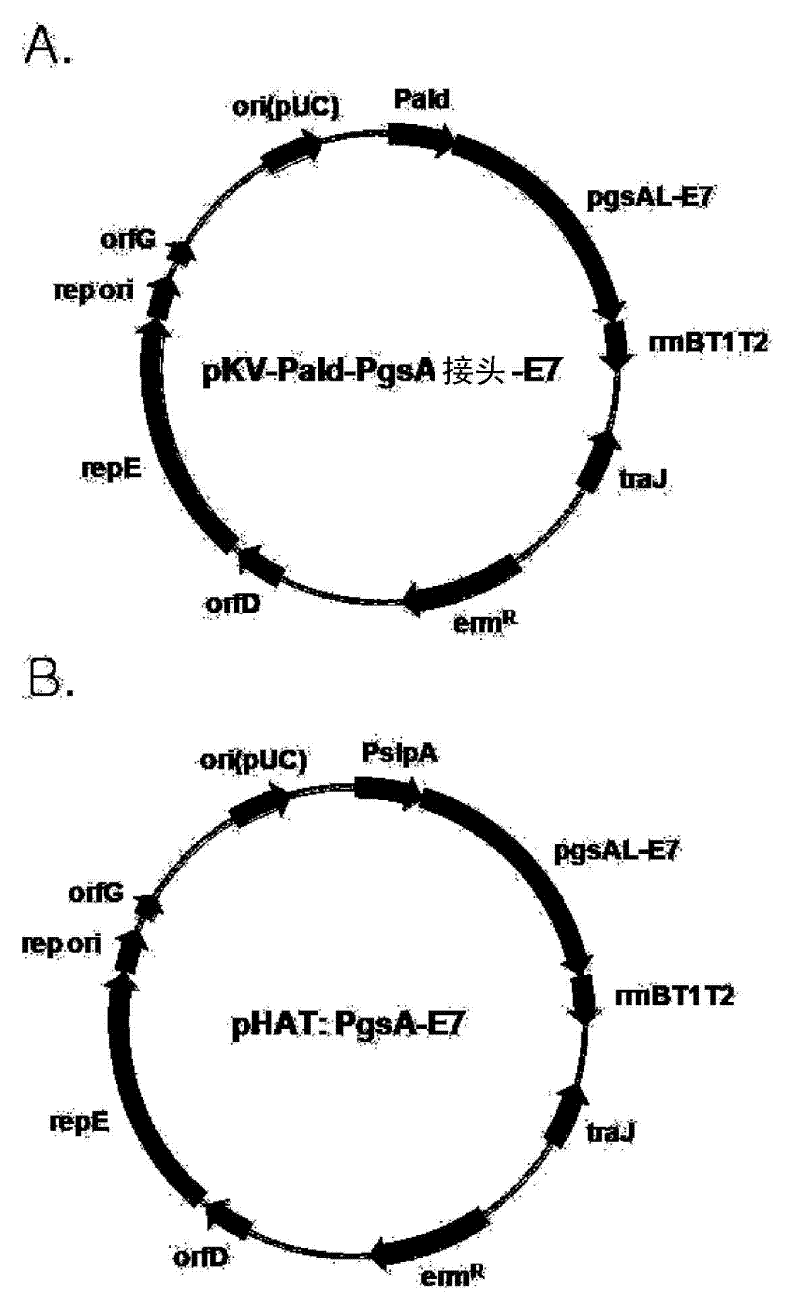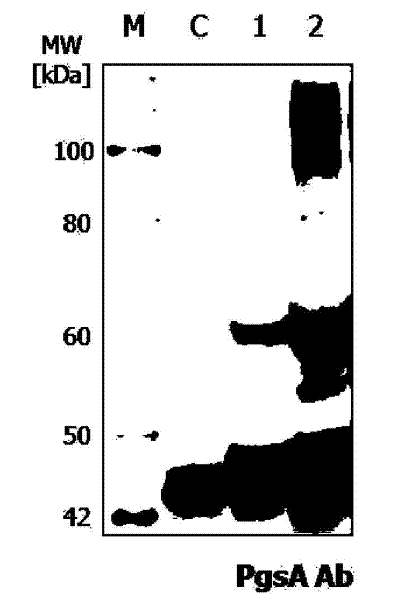Vector for treatment vaccine for stable and constitutive high-expression cervical cancer and recombinant lactobacillus transformed by same
A vector and vaccine technology, which can be used in the introduction of foreign genetic material, vector, and hybrid cell preparation using vectors, which can solve the problems of limited plant system, low protein expression and purification, etc.
- Summary
- Abstract
- Description
- Claims
- Application Information
AI Technical Summary
Problems solved by technology
Method used
Image
Examples
Embodiment 1
[0050] Example 1: Preparation of a surface expression vector (pKV-Pald-PgsAL-amylase) containing a repE mutant gene
[0051] In this example, in order to stably express the vector in host cells, a surface expression vector containing a mutant repE gene and showing an increased expression level of the target protein was constructed.
[0052] First, in order to further increase the expression of the target protein in lactic acid bacteria, a fragment of the aldolase promoter from Lactobacillus casei was obtained. The aldolase promoter was obtained by PCR using pDT-PgsA-amylase (disclosed in Korean Patent Publication No. 10-2008-0086161) as a template and SEQ ID NO: 2 and SEQ ID NO: 3 as primers.
[0053] SEQ ID NO: 2: 5'-cgc gca tgc aat acc cac tta ttg cg-3'
[0054] SEQ ID NO: 3: 5'-cag ttc ttt ttt cat gta gat atc ctc c-3'
[0055] As a result, a DNA fragment of 421bp was obtained, which contained the aldolase promoter, the Sph I restriction endonuclease site and at th...
Embodiment 2
[0062] Example 2: Preparation of HPV16 E7 surface expression vector (pKV-Pald-PgsA-E7)
[0063]Using the surface expression vector (pKV-Pald-PgsA-amylase) prepared in Example 1, the gene encoding the HPV16 E7 protein was inserted into the C-terminal end of PgsA, thereby preparing pKV capable of expressing the target protein on the surface of lactic acid bacteria - Pald-PgsA-E7 vector.
[0064] For this reason, remove the pKV-Pald-PgsA-amylase vector prepared in Example 1 with pGS The fused amylase gene, and the HPV16 E7 coding gene was inserted into the vector. like figure 1 As indicated, using pHAT:PgsA-E7 (Poo et al., Int. J. Cancer, 119:1702, 2006) as a template and SEQ ID NO: 6 and SEQ ID NO: 7 as primers to obtain a fragment containing the HPV16 E7 gene by PCR.
[0065] SEQ ID NO: 6: 5'-gcg gga tcc cat gga gat aca cct aca ttg c-3'
[0066] SEQ ID NO: 7: 5'-acg cag aag cgg tct gat aa -3'
[0067] As a result, a 386bp fragment containing the HPV16 E7 gene was...
Embodiment 3
[0070] Embodiment 3: Check the expression of pHAT:PgsA-E7 and pKV-Pald-PgsA-E7 in transformed lactic acid bacteria
[0071] In this example, the pHAT constructed in Example 2: PgsA-E7 and pKV-Pald-PgsA-E7 were respectively used to transform Lactobacillus casei. The transformed recombinant Lactobacillus casei strain was cultured, and the expression of E7 protein in the recombinant strain was examined. Expression of E7 protein fused to PgsA in transformed recombinant L. casei strains was examined.
[0072] Recombinant Lactobacillus casei strains transformed with pHAT: PgsAE7 and pKV-Pald-PgsA-E7 were cultured statically in MRS medium (Lactobacillus MRS, Becton Dickinson and Company Sparks, USA) at 30°C to induce the interaction with poly-γ - glutamate synthase pGS Surface expression of HPV16 E7 protein fused to the C-terminus of the gene.
[0073] Whole cells of the cultured Lactobacillus casei strain were subjected to SDS polyacrylamide gel electrophoresis and Western...
PUM
 Login to View More
Login to View More Abstract
Description
Claims
Application Information
 Login to View More
Login to View More - R&D
- Intellectual Property
- Life Sciences
- Materials
- Tech Scout
- Unparalleled Data Quality
- Higher Quality Content
- 60% Fewer Hallucinations
Browse by: Latest US Patents, China's latest patents, Technical Efficacy Thesaurus, Application Domain, Technology Topic, Popular Technical Reports.
© 2025 PatSnap. All rights reserved.Legal|Privacy policy|Modern Slavery Act Transparency Statement|Sitemap|About US| Contact US: help@patsnap.com



